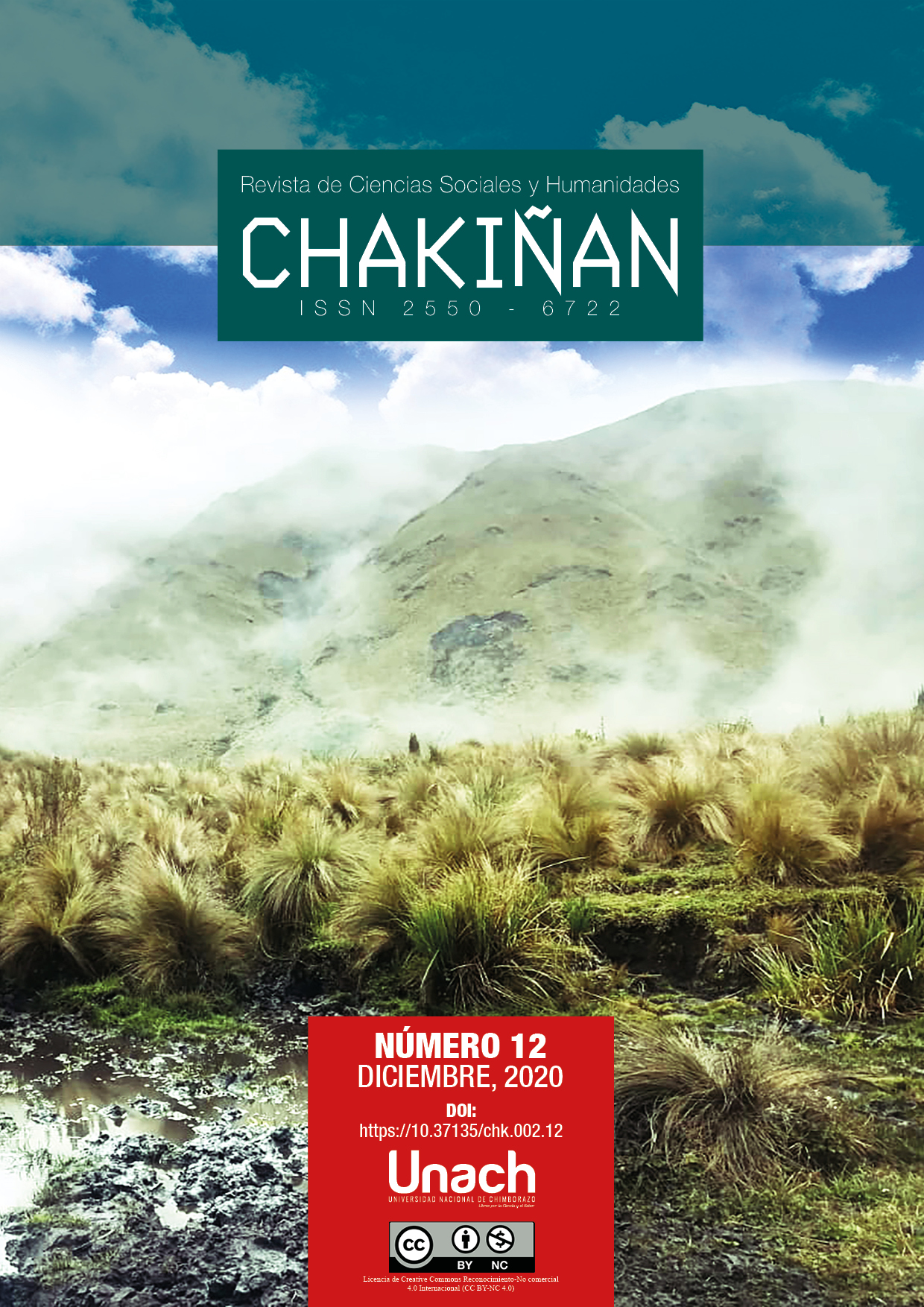THE CONSTRUCTION OF PROTONATIONAL IDENTITY IN THE VIRREINAL AMERICA: THE CASE OF MARIANA DE JESÚS IN QUITO
Main Article Content
Abstract
The nation is a cultural construction of the eighteenth century. However, the identity of modern nations has its origin in the older imaginary. This study aims to describe the relevance of religious discourse in the formation of the Ecuadorian nation. Through discourse analysis, this article details the case of Santa Mariana de Jesús in Quito. It compares it with two other cases of Latin American cities, whose protonation identity was formed in the vice-regal stage. Which was based on a local religious cult, for example, Mexico and the Virgin from Guadalupe, Lima, and Santa Rosa. The study concludes that the origins of the modern nation are in the Christianized culture of the Middle Ages and that the modern Latin American nation is based on an imaginary fueled by religious discourse with strong political implications.
Downloads
Article Details
Conference Proceedings Volume
Section
Responsibility of the authors:
The authors are responsible for the ideas and data collected in the manuscripts. They are additionally accountable for the fidelity of the information, the correction of the citations, the right to publish any material included in the text, and the presentation of the manuscript in the format required by the Journal (WORD template). A manuscript forwarded to CHAKIÑAN must not have been published before, nor must it have been submitted to another means of publication.
Copyright:
Published articles do not necessarily compromise the viewpoint of the CHAKIÑAN JOURNAL. The Journal is aligned to the policy of the licence de Creative Commons Reconocimiento-No comercial 4.0 Internacional (CC BY-NC 4.0). Each author retains the right to the paper published in the Chakiñan journal.
Privacy statement
The personal data and email addresses entered in this magazine will be used exclusively for the purposes stated by the publication and will not be available for any other purpose or person.
How to Cite
Share
References
Anderson, B. (1993). Comunidades Imaginadas. Reflexiones sobre el origen y la difusión del nacionalismo. México D.F., México: Fondo de Cultura Económica.
Arnal, A. (2010). La Guadalupe. Sociopolítica mexicana desde la iconografía religiosa. Estudios Políticos, (21), 101-112. Recuperado de http://www.scielo.org.mx/scielo.php?pid=S0185-16162010000300006&script=sci_arttext
Ayala Valdivieso, M. (2006). Estudio histórico y análisis estético de las principales obras sobre Mariana de Jesús en el Monasterio del Carmen antiguo de San José (tesis de grado). Universidad Tecnológica Equinoccial, Quito, Ecuador. Recuperado de http://repositorio.ute.edu.ec/bitstream/123456789/5188/1/27900_1.pdf
Ditchfield, S. (2010). Thinking whit Saints: Santity and Society in the Early Modern World. Recuperado de https://www.academia.edu/3760848/Thinking_with_Saints_saints_and_sanctity_in_the_Early_Modern_World
Echeverría, B. (2007). El guadalupanismo y el ethos barroco en América. Recuperado de http://ru.ffyl.unam.mx/bitstream/handle/10391/3644/06_Theoria_23_2011_Echeverria_101-111.pdf?sequence=1&isAllowed=y
Esacamilla, I. (2000). Máquinas troyanas: El Guadalupanismo y la Ilustración Novohispana. Recuperado de https://www.academia.edu/434442/_M%C3%A1quinas_troyanas_el_guadalupanismo_y_la_Ilustraci%C3%B3n_novohispana_Troyan_devices_the_Virgin_of_Guadalupe_devotion_and_the_Enlightenment_in_New_Spain_
Foucault, M. (1991). Saber y verdad. Madrid, España: Editorial La Piqueta.
Gutiérrez, N. (2010). La construcción del heroísmo de Mariana de Jesús: Identidad nacional y sufrimiento colectivo. Íconos, (37), 149-159.
Hampe, T. (1998). Santidad e identidad criolla. Estudio del proceso de canonización de Santa Rosa. Cuzco, Perú: Centro de Estudios Regionales Andinos Bartolomé de las Casas.
La Parra, S. (2017). Francisco de Borja en el espejo de Teresa de Jesús. (Vidas paralelas unidas por la modernidad). Studia Histórica, (39),327-367.
Loor, W. (1943). Biografía del Padre Julio María Matovelle. Quito, Ecuador: Litografía e Imprenta Editora Romero.
Marzal, M. (2002). Los santos y la transformación religiosa del Perú Colonial. En J. Decoster (ed.), Incas e indios cristianos. Élites indígenas e identidades cristianas en los Andes Coloniales (pp. 359-372). Cuzco, Perú: Asociación KURAKA.
Matovelle, J. (1902). Documentos para la historia de la Beata Mariana de Jesús. Azucena de Quito. Quito, Ecuador: Gobierno Eclesiástico de la Arquidiócesis de Quito.
Milán de la Cuadra, A. (1988). Cartas del Rvdo. Padre Amadeo Milán de la Cuadra dirigidas a Mercedes de Jesús (1864-1865). En J. Benítez Romero (ed.), Mercedes de Jesús su vida. Fuentes primigenias. Quito, Ecuador: Editorial Don Bosco.
Olivares, A. (2005). Santa Rosa de Lima. México D. F., México: Prymat Libros.
Ortemberg, P. (2006). Celebración y guerra: la política simbólica independentista del General San Martín en el Perú. Recuperado de https://halshs.archives-ouvertes.fr/file/index/docid/104181/filename/PabloOrtemberg.pdf
Osorio, A. (2000). Santidad e identidad criolla: estudio del proceso de canonización de Santa Rosa. Hispanic American Historical Review, 80(3),603-604.
Osorio, A. (2014). El rey en Lima. El símbolo real y el ejercicio del poder en la Lima del diecisiete. Recuperado de http://repositorio.iep.org.pe/bitstream/IEP/995/2/documentodetrabajo140.pdf
Ross, W. (1965). Santa Rosa de Lima y la formación del espíritu hispanoamericano. Recuperado de http://cvc.cervantes.es/literatura/aih/pdf/02/aih_02_1_051.pdf
Ruiz, M. (2006). La devoción popular Guadalupana en la teatralidad mexicana. América sin nombre, (8), 36-42. Recuperado de http://rua.ua.es/dspace/bitstream/10045/5695/1/ASN_08_05.pdf
Sassen, S. (2010). Territorio, autoridad y derechos. De los ensamblajes medievales a los ensamblajes globales. Madrid, España: Katz editores.
Traslosheros, J. (1997). Santa María de Guadalupe: hispánica, novohispana y mexicana. Tres sermones y tres voces guadalupanas. Recuperado de http://www.historicas.unam.mx/publicaciones/revistas/novohispana/pdf/novo18/0279.pdf
Van Deusen, N. (2007). Entre lo sagrado y lo mundano: la práctica institucional y cultural del recogimiento en la Lima virreinal. Lima: Pontificia Universidad Católica del Perú-IFEA.






